
Challenge 2500 | 7. A missed chance
Back with another tournament recap. This time, with some photos and diagrams.Over the past week, I participated in a 9-round tournament in Lienz, a quaint little alpine town in the south of Austria, surrounded by snow-covered mountains.
Fun fact: its geographical location can be described as being roughly halfway on a straight line between Vienna and Milano. Alternatively, you can use Munich and Trieste. Do with that information what you want.


As always, let's look at the numbers first: rating performance of 2334, a rating change of -4,2 (https://chess-results.com/tnr683837.aspx?lan=1&art=9&fed=GER&flag=30&snr=8).
While not a disastrous tournament, it is a bit disappointing. I had many interesting games though and learned a lot of opening theory. Also, I didn't feel like I played terribly, finding many resources, even in the game I lost. At the same time, I played far from my best chess, which is not good obviously, but also means that much more is possible.
Interesting stat: the average number of moves in my games was ~56. Many long, fighting games.
The Tournament
I'll go though the tournament and show one interesting/important position per game. Further below, you can click through the games in a study containing them in full.
Rounds 1+2: a shaky 2/2
In round 1, all was well until I reached this dominating position:
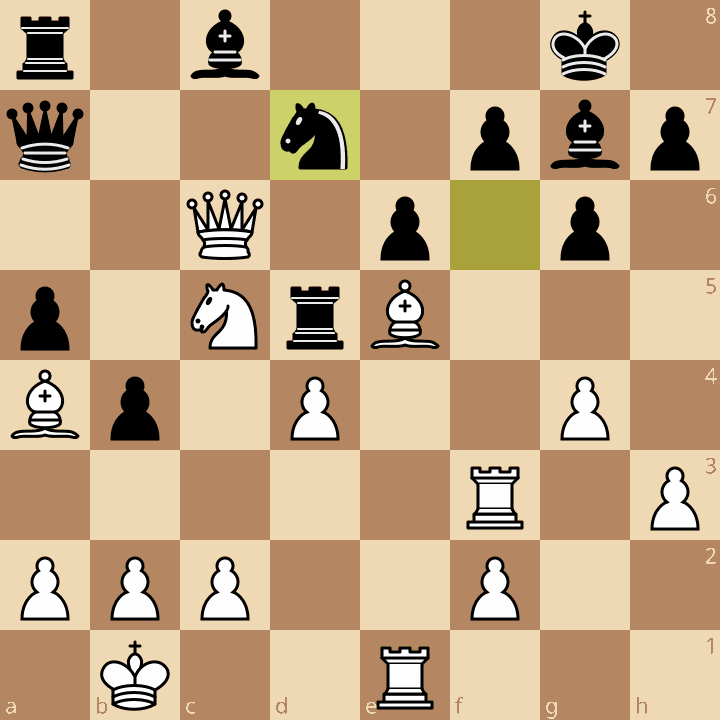
Here, I wanted to sacrifice my rook with Rxf7. I didn't want to calculate the immediate 29.Rxf7 though (which would've been crushing) and instead played the lazy 29.Bxg7 knowing that after 29. ...Kxg7 30.Rxf7+ would definitely work.
However, my opponent spotted that 29. ...Nxc5! intending ...Bd7 (trapping my queen!) is incredibly strong, after which instead of being completely winning, I was barely even better. Things can really go south quickly!
He made a couple of mistakes though and I ended up winning, but that's not the kind of game you want to start a tournament with.
In round 2, I managed to play a ??-move after thinking for 45 minutes. The position was highly complex, but still, a classic case of 'long think, wrong think'.
Later in the game I managed to find some accurate moves though. How should Black to move proceed in this position?
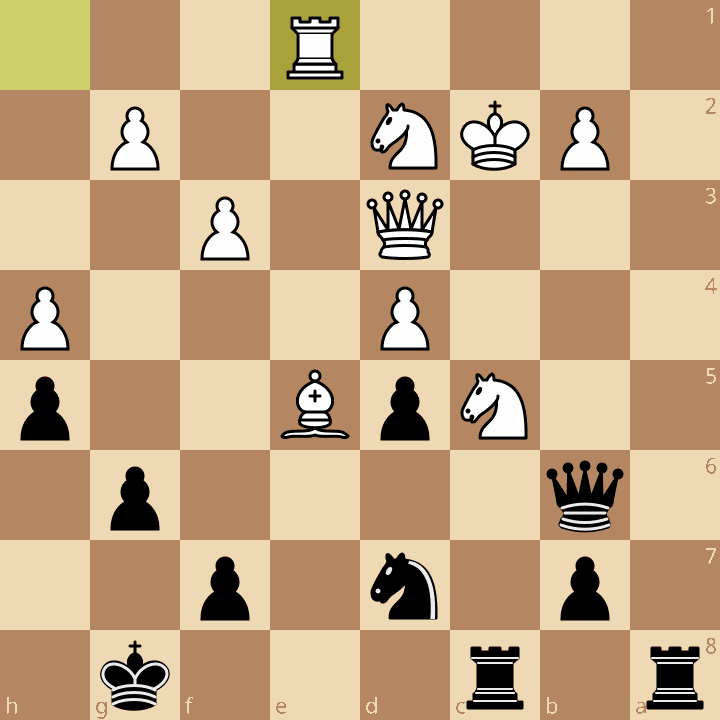
Rounds 3+4: Decent games, no wins
Round 3 still wasn't amazing, as I didn't manage to convert a significant opening advantage against a talented Austrian youngster (2278).
Once I had missed my chance, the position remained close to equal as my opponent defended a position that was only very slightly better for me very well.
In this position, I had still some hopes, as my pieces are a bit more effective. Alas, not effective enough.
Why does the desirable ...Rc8 not work though?
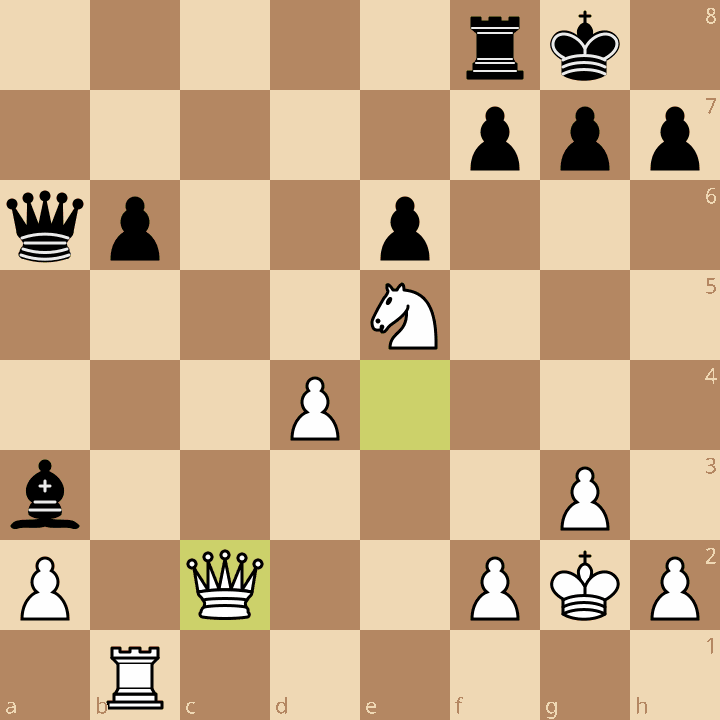
In round 4, I achieved a promising position against my strong Malaysian opponent Zhuo Ren.
As my opponent pointed out to me after the game, in this position...
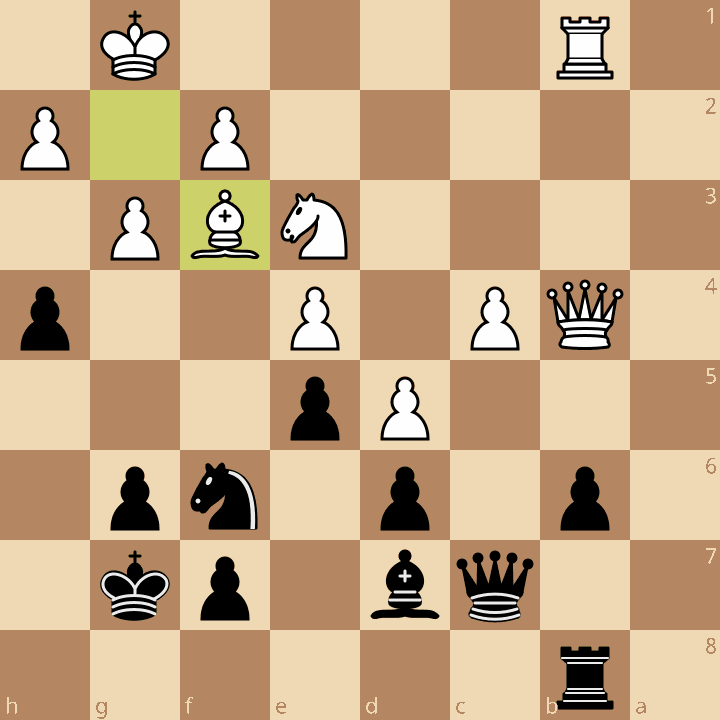
29. ...h3! would have been strong. I don't know why I decided against it, since this really is a typical move in these kinds of positions (here, it leaves White with almost no moves!) but I opted for the tame 29. ...hxg3, releasing all the pressure, after which the game was pretty equal and ended in a draw.
Still, the games weren't bad and I still had hopes for a good second half of the tournament.
Rounds 5+6+7: High quality chess, good results
In round 5, I played my smoothest game of the tournament against WIM Heinatz (2165). We reached this picturesque position.
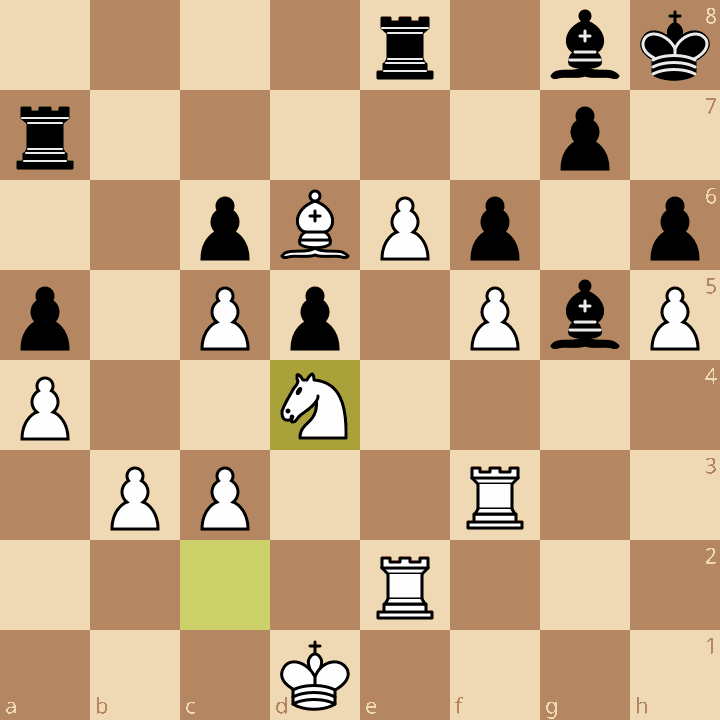
Now that is a sad bishop on g8. All that was left was support the b- and a-pawns with the rooks and start pushing them towards promotion. A nice victory.
In round 6, I played against a Georgian FM, Chkhaidze (2165), who I felt played much better than his current rating. The game was very equal for a long time, both of us finding rich ideas and posing practical problems back and forth. In the end, I got a 3 vs 2 pawns rook endgame, where I tried to make the most of it. Finally, hid did make a crucial mistake and I won the game.
Earlier in the game, this was a highly interesting position. Again, I thought about around 45 minutes here!

My opponent had just played a fantastic strategic pawn sacrifice to avoid an otherwise slightly worse position and I was debating whether to play the 'normal' 17. ...Nf6, allowing 18.c4 creating a strong bind or whether to play the more dynamic, less static 17. ...c4, potentially giving back a pawn. Every 7 minutes or so during my think, I changed my mind, always finding something wrong with both approaches, but I finally went for 17. ...Nf6 18.c4 a5! (important, 18. ...Ne4 19.Qa5! would have been a positional dream for White).
Ironically, both 17. ...c4 and 17. ...Nf6 are 0.00 on high depth. Whatever.
In round 7, I had Black again, this time against the strong GM Sandipan Chanda (who, at his best, was rated 2656!). This turned out to be my favourite defensive game I've ever played. It was also one of the toughest games: constantly under pressure, a slightly worse position during most of the game, two times severe time trouble. All the more satisfying was it to finally earn the draw.
It's not easy picking just one diagram for this game (again, feel free to look at it in its entirety further down in this post), but I'll pick this one:

It's another tough decision, posed by the critical move 17.f4. Should Black
- play something like 17. ...Nf6, allowing 18.f5 Bh7, after which Black's pawn structure is better than White's, but the bishop is terrible? At some point you'd probably have to play ...f6-Lg8-f7 to regain some semblance of activity.
- play ...f6 right away, allowing the immediate retreat 18.f5 Bf7, but weakening the light squares considerably, allowing 19.Bh5, after which Black won't be able to stop White from reaching e6 with his knight!
- go for something else entirely and play 17. ...Be4!?, avoiding the passive bishop but potentially weakening some pawns after 18.Nxe4 dxe4 (they are all on light squares and could fall prey to the bishop!)
Sorry if you expect there to be a definite answer, but once again, all three options lead to objectively equal positions. I didn't know that during the game though. For all I knew, there might be just one move holding the balance, since after all, they lead to such different types of positions!
I eventually decided for 17. ...f6. What would you have done?
Round 8+9: Weak finish
I was feeling good before the 8th round: I was playing a decent tournament and was now paired with another strong player with White, and I really hoped to put some pressure early on and ideally win the game. The first one of those aims worked well, the second one not so much. In fact, in a much better for me, but messy position in mutual time trouble, my experienced grandmasterly opponent Venkatesh (2452) played well and turned things around, while I made several subpar moves.
There were many interesting moments in this game, but I'll show this one, because it's quite curious.
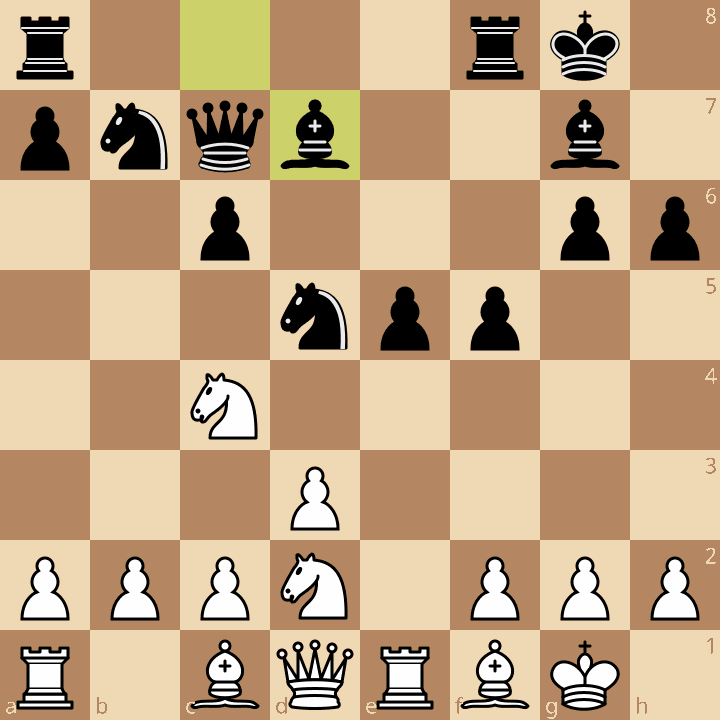
After a very successful opening stage, I played the natural 17.Nf3 Rae8 18.d4 e4 19.Ne5, which does lead to a clearly better position (roughly +1.0). However, apparently, the absolutely insane looking 17.b3!!? is much better (+1.6). I didn't even calculate this move because it looked impossible to me, giving Black ...e4 and ...Nc3-ideas. This is one of those instances where intuition is not sufficient and even misleading. At least I should have tried to back my intuition up with a concrete variation proving it right. Often, this is not too difficult to do (you have to be careful not to fall for some form of confirmation bias). Here, however, the move 17.b3 looked so outlandish to me that I didn't even half-seriously consider it.
Again, the actual mistakes happened later in the game, but I thought this was a noteworthy moment.
In round 9, I was paired with Black against FM Ollenberger (2267). I had a slightly better position and reached a promising endgame, but I didn't put enough pressure and my opponent defended well, so the game ended in a draw.
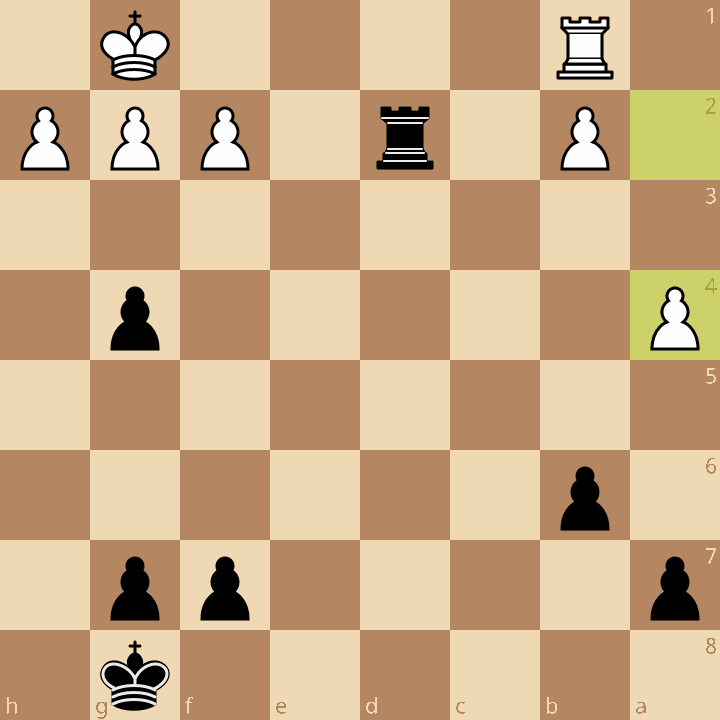
There is not much to say about it other than this seems like a great position to play out to practice practical rook endgame play!
Here's all my games in a study:
What's Next
First of all, I've decided to stop forcing myself to write a blog post every single week but instead whenever I see fit, since I have noticed investing mental energy into this blog that could be going into training. So I'll slightly reduce the frequency. I'll definitely continue to review the tournaments I play though at the very least. These reviews are also a great way for me personally to regain some optimism. For example, after this tournament, I was a bit dejected given the result, but writing this entry put things into perspective. It wasn't actually that bad. And if this is bad, then my floor is pretty high and it's now time to work on raising the ceiling and aiming for great performances.
Another good thing I'm noticing is that I'm much less intimidated by strong opponents. I used to be especially nervous against grandmasters, that's no longer really the case. I assume that's a decent psychological foundation for trying to score more victories against these guys.
I'll be working on my chess for the next 10 days, since the next tournament is just around the corner and I want to do much better than in this one.
So here is my plan regarding daily training:
- 2x 30 min. ChessTempo (Problem Set: Blitz, Difficulty: Medium)
- 50 min. Lichess puzzles
- 8 Blitz games (3+2)
Additionally, scheduled rapid games against >2300-rated players (I have started playing two of those every week, I intend to expand that part of training a bit) and opening work.
That's it. Thanks for reading and until next time, cheers!
More blog posts by iakov98

Challenge 2500 | Almost halfway there!
After Vlissingen, I competed in two more tournaments in August. In this brief article I summarise th…
Challenge 2500 | 11. Vlissingen
Tournament play continues! Reviewing my tournament result in Vlissingen; one more step forward on my…
Challenge 2500 | 10. Training Continues
In this post, I'll recap how this project has been going so far, set some goals and intentions for t…